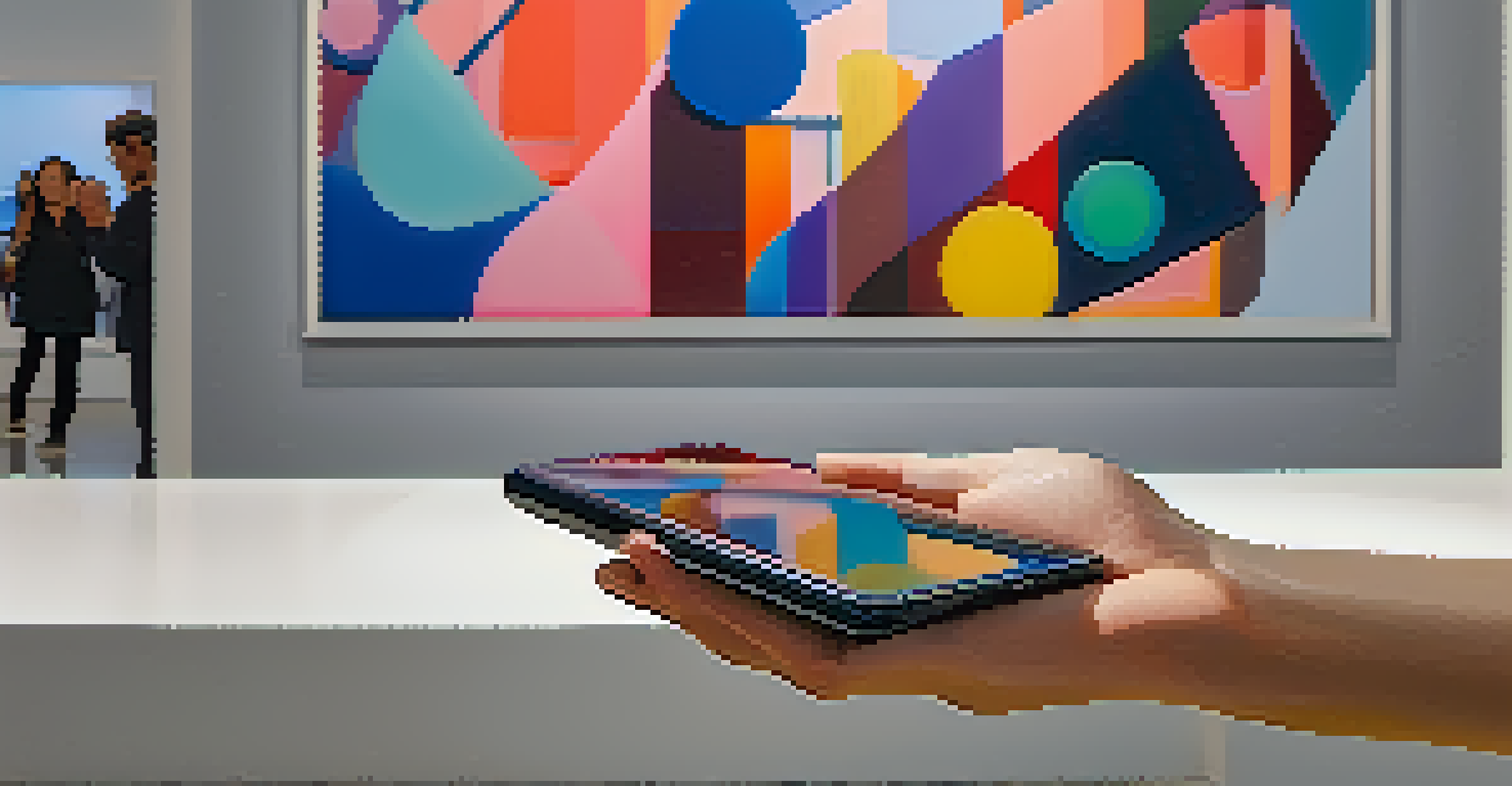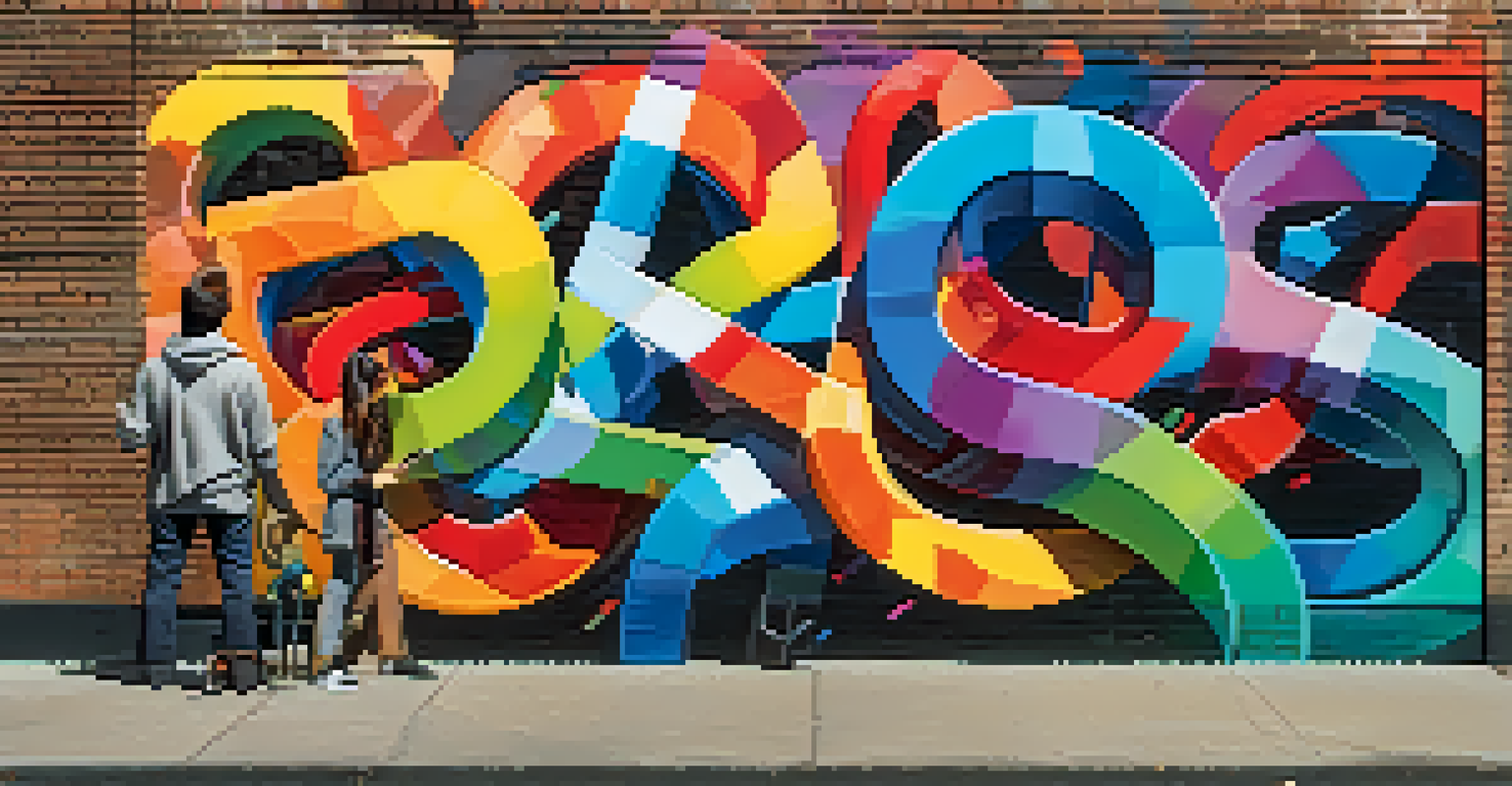The Impact of Social Media on Art Criticism and Dialogue

The Rise of Social Media in the Art World
Social media has become a powerful platform for artists and critics alike, transforming how art is shared and discussed. Platforms like Instagram and Twitter allow artists to showcase their work to a global audience instantly. This accessibility has democratized the art world, giving voice to emerging artists who might have otherwise gone unnoticed.
Social media is not just a platform for self-promotion; it is a tool for dialogue and community building in the art world.
Critics and art enthusiasts can now engage in conversations directly with creators, breaking down traditional barriers that once separated these groups. This shift encourages a more inclusive dialogue, where diverse perspectives can flourish. As a result, the boundaries of art criticism are expanding, allowing for more dynamic interactions.
Moreover, social media enables real-time feedback, where audience reactions can influence an artist's work almost immediately. This immediacy creates a vibrant, ever-evolving conversation around art, making it a living, breathing entity rather than a static subject.
Changing Definitions of Art Criticism
In the past, art criticism was often confined to established publications and critics. However, social media has shifted the definition of who can be a critic, enabling anyone with a voice and a following to contribute their insights. This democratization of criticism can be both a blessing and a challenge, as it opens the door for a variety of opinions and interpretations.

While traditional critics may still hold sway, the rise of user-generated content means that perspectives from everyday viewers can gain traction. This creates a richer tapestry of dialogue around art, where professional critiques coexist with personal reflections. The result is a more nuanced understanding of art that embraces subjective experiences.
Social Media Democratizes Art Sharing
Platforms like Instagram and Twitter allow artists to reach a global audience, transforming how art is showcased and discussed.
However, this shift also raises questions about quality and credibility. With so many voices in the mix, discerning valuable insights from noise can be daunting for both artists and audiences. Establishing trust and authority in this new landscape is essential for meaningful dialogue.
The Role of Visual Platforms in Art Dialogue
Visual platforms like Instagram and Pinterest are especially impactful for artists, as they prioritize images over text. This visual-centric approach allows art to speak for itself, drawing viewers in through striking visuals. The immediacy of these platforms encourages rapid sharing, leading to viral moments that can catapult lesser-known artists into the spotlight.
Art is not a solitary endeavor; it thrives on the interaction and feedback of its audience.
Additionally, these platforms foster a sense of community among artists and art lovers. Users can easily follow, comment, and share works they admire, creating a network of support and inspiration. This interconnectedness helps artists feel less isolated in their practice and more engaged with the broader art community.
However, the emphasis on visuals can sometimes overshadow deeper discussions about the meaning and context of art. While eye-catching images grab attention, they may not always encourage thoughtful critique. Balancing visual appeal with substantive dialogue becomes crucial for enriching the art conversation.
Audience Engagement and Art Interpretation
Social media has redefined audience engagement, allowing individuals to interact with art in unprecedented ways. Followers can comment, share, and even create their own interpretations, making them active participants in the artistic process. This shift transforms the audience from passive viewers into engaged critics and co-creators.
As a result, art interpretation has become a collaborative effort. Artists may find inspiration in the feedback and interpretations provided by their audience, leading to new directions in their work. This reciprocal relationship between creator and viewer fosters a deeper connection to the art, enhancing its impact.
Critique Culture: A Double-Edged Sword
While social media fosters constructive feedback, it can also lead to harsh criticisms that negatively impact artists' mental health.
However, this active engagement also brings challenges, as differing opinions can lead to heated debates. While constructive criticism can be beneficial, negative discourse can detract from the overall appreciation of art. Navigating this landscape requires a balance of openness to feedback and a commitment to respectful dialogue.
Influencers and Their Role in Art Promotion
The rise of social media influencers has added another layer to the art world, with many leveraging their platforms to promote artists and exhibitions. These influencers curate content that resonates with their followers, helping to elevate lesser-known artists' profiles. This trend can significantly impact an artist's visibility and career trajectory.
However, the influencer model can also lead to commercialization, where the focus shifts from art's intrinsic value to its marketability. Artists may feel pressured to create work that appeals to trends rather than their personal vision. Striking a balance between authenticity and commercial appeal becomes a challenge for many creators.
Additionally, the relationship between influencers and artists can sometimes be transactional, which may not foster genuine appreciation for the art itself. As audiences become more discerning, the challenge lies in maintaining authenticity while leveraging influencer marketing strategies.
Critique Culture: The Good and the Bad
The accessibility of social media has led to the rise of critique culture, where anyone can express their opinions about art. This can lead to constructive discussions that help artists grow and evolve in their practice. Positive feedback can inspire artists to push boundaries and explore new ideas.
On the flip side, the ease of sharing opinions can also result in harsh criticisms that may not be well-founded. Anonymity emboldens some individuals to leave hurtful comments, which can be damaging to artists' mental health. This creates a delicate balance between honest critique and supportive dialogue.
Emerging Tech Shapes Art Engagement
Innovations like virtual and augmented reality are set to enhance audience interaction with art, creating new opportunities for critique and understanding.
Navigating critique culture requires a thoughtful approach, both from critics and artists. While it’s important to foster open discussions, it’s equally crucial to ensure that feedback is constructive and respectful. This balance can help create a more supportive environment for artistic expression.
Future Trends in Art Criticism and Social Media
As social media continues to evolve, so too will its impact on art criticism and dialogue. Emerging technologies, such as virtual reality and augmented reality, are likely to open new avenues for experiencing and critiquing art. These innovations could enhance the way audiences interact with and understand art, further bridging the gap between creator and viewer.
Moreover, the increasing emphasis on mental health and well-being in creative spaces might influence how art is critiqued. A shift towards empathy and understanding in discussions could foster a more supportive environment for artists. As the conversation around art evolves, so will the expectations for how we engage with it.

In this ever-changing landscape, adaptability will be key. Artists, critics, and audiences must remain open to new forms of dialogue and collaboration. By embracing change, the art world can continue to thrive and reflect the diverse voices that make it vibrant.